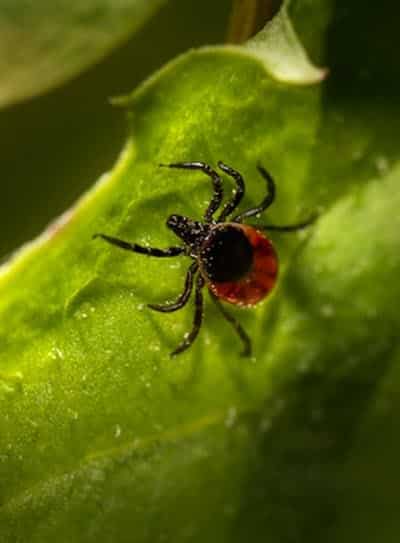Tick Control

Ticks: Clingy, Dangerous Hitchhikers
Ticks are the silent, bloodthirsty parasites that live for one thing: to latch onto an unsuspecting host and feast on their blood. These tiny, eight-legged hitchhikers are not just annoying—they’re dangerous. Ticks are vectors for a host of serious diseases, including Lyme disease, Rocky Mountain spotted fever, and even an allergy to red meat! If you’ve ever brushed off the idea of ticks as a minor nuisance, think again. These relentless parasites could be crawling through your yard or, worse, into your home as we speak.
How to Know If You Have a Tick Problem
Ticks may be sneaky, but there are several red flags that could indicate an infestation:
- Unexplained Bites: Ticks often attach themselves without causing immediate pain or irritation. You may not notice a tick bite until you find the parasite embedded in your skin.
- Frequent Pet Scratching: If your pets are scratching more than usual or seem unusually agitated, ticks may have attached themselves to their skin.
- Tick Sightings: Have you ever found a small, round bug on yourself, your pets, or your clothes after being outdoors? Spotting even one tick can indicate that there are many more hiding in the grass or bushes around your property.
- Symptoms of Illness: If you or your pets develop flu-like symptoms (fever, headache, fatigue), a tick-borne illness might be the cause. Immediate medical attention is critical in such cases.
The Dangers Ticks Bring to Your Home
Ticks are more than a simple annoyance. These tiny creatures are walking disease factories, and a single bite can have serious health consequences:
- Lyme Disease: This is the most notorious tick-borne illness, caused by the bacteria Borrelia burgdorferi. Early symptoms include a bullseye rash, fever, and joint pain. Left untreated, Lyme disease can lead to chronic pain, neurological issues, and even heart problems.
- Rocky Mountain Spotted Fever: Another deadly disease spread by ticks, this condition can cause severe headaches, rashes, and organ failure if not treated promptly.
- Anaplasmosis and Ehrlichiosis: These are lesser-known tick-borne diseases that can lead to fever, chills, and even respiratory failure.
- Alpha-Gal Syndrome: Believe it or not, a bite from the Lone Star tick can trigger a red meat allergy in humans, making even a simple burger or steak off-limits for life.
Tick Biology and Life Cycle
Ticks are small, parasitic arachnids that go through four life stages:
- Egg: Female ticks lay thousands of eggs at a time, usually in sheltered outdoor environments.
- Larva (6-legged): Once hatched, the larva, also called a “seed tick,” searches for a host for its first blood meal.
- Nymph (8-legged): After feeding, the larva molts into a nymph, which is slightly larger and needs another blood meal to grow.
- Adult (8-legged): The nymph molts into an adult, which feeds one last time before mating and laying eggs, starting the cycle again.
Ticks can take several months to years to complete their life cycle, depending on environmental conditions. They pose a health risk to humans and animals by transmitting diseases like Lyme disease, making proper control important.

How Ticks Invade Your Life
Ticks don’t just magically appear; they get carried into your home in some sneaky ways:
- Pets: Your furry friends are tick magnets, especially if they roam through tall grass or wooded areas. Once ticks latch onto your pet, they can easily migrate into your home and attach themselves to you or your family.
- Wildlife: Deer, rodents, raccoons, and even birds can bring ticks into your yard. These animals host ticks in all life stages, spreading them around like tiny time bombs waiting to attach to a new host.
- Your Own Clothes: If you hike, camp, or even spend time gardening, you could be unknowingly bringing ticks inside on your clothes, shoes, or gear.
Tick-Conducive Conditions Around Your Home
Ticks thrive in specific environments, and your backyard may unknowingly be a paradise for them:
- Overgrown Lawns and Tall Grass: Ticks love to hide in shaded, moist areas like tall grass, where they can wait to ambush their next meal.
- Leaf Litter and Debris: Piles of leaves or grass clippings are the perfect shelter for ticks looking for a cool, damp place to hide.
- Untrimmed Shrubs and Trees: Shady, humid areas around shrubs and trees are tick hotspots, especially along fence lines and wooded areas.
- Moisture: Ticks dehydrate quickly, so they thrive in areas with moisture. Damp soil, poor drainage, or a lack of sunlight can all make your yard a haven for ticks.
10 Creepy (But True) Facts About Ticks
- Ticks Are Not Insects: They belong to the arachnid family, making them closer relatives to spiders and scorpions than to fleas or mosquitoes.
- Ticks Have Specialized Mouthparts: Their mouth is like a tiny saw, designed to cut through skin and stay anchored for days while they feed on your blood.
- They Can Live for Years Without Feeding: Some ticks can survive up to 3 years without a single meal!
- Ticks Sense Your Breath: They can detect the carbon dioxide you exhale and will crawl toward it to find a host.
- One Female Tick Can Lay Thousands of Eggs: A single tick can lay 2,000 to 18,000 eggs at one time, making infestation a real threat.
- Ticks Can Survive Winter: In colder climates, ticks can enter a state of dormancy or attach themselves to hosts that keep them warm.
- Ticks Feed Slowly: A tick can stay attached to its host for 3 to 10 days, slowly filling up on blood and growing up to 10 times its normal size.
- They Inject Anesthetic: When ticks bite, they release a small amount of anesthetic to numb the area, so their host often doesn’t feel a thing.
- Some Ticks Are Vampires for Life: Certain species of ticks feed off the same host at multiple stages of their life, coming back for seconds, thirds, and fourths!
- Ticks Can Cause Paralysis: Some ticks produce a toxin that can lead to a rare but serious condition known as tick paralysis, which can result in muscle weakness and even respiratory failure.
Tips to Keep Ticks Out of Your Life
Don’t want to see another tick again? Try these effective tick control tips:
- Regular Lawn Maintenance: Keep your grass short and remove leaf litter and brush piles where ticks might hide.
- Create a Tick-Free Barrier: Install wood chips or gravel between lawns and wooded areas to create a dry barrier that ticks won’t cross.
- Use Tick-Repellent Plants: Plants like lavender, mint, and marigolds are natural tick deterrents, and they smell great too!
- Treat Pets Regularly: Use vet-approved tick prevention treatments for pets and check them for ticks after outdoor activities.
- Wear Protective Clothing: If you’re hiking or in a tick-prone area, wear long sleeves and tuck pants into your socks to prevent ticks from reaching your skin.
- Tick-Proof Your Yard: Consider having your yard professionally treated to create a protective barrier against ticks.
- Have a Professional Rodent Inspection Performed: Be sure that rodents and larger critters aren’t actively contributing to interior ticks by getting an expert inspection See our pages on Rodent Control and the importance of choosing a highly thorough company with rodent specialists.
- Have Rodent Exclusion Specialists Perform Exclusion: If needed, choose only specialists for this one to eliminate and mitigate tick presence going forward. If you don’t eliminate the source, they’ll be back.
Why Ticks Are Best Left to the Pros
DIY tick control is a good start, but ticks are experts at hiding. To fully rid your property of these blood-sucking invaders, you need professional tick control. At Pasadena Pest Control, we take a comprehensive approach, treating your yard with eco-friendly solutions that target ticks at every life stage. Our experts know exactly where ticks love to hide and can help you maintain a tick-free yard all year long. You can trust us to protect your home, pets, and family from these microscopic menaces.
Safety First
“Is it Safe?”
At Pasadena Pest Control, we keep the safety of your family and pets at the forefront of our minds as we plan and work, doing so with minimal disruption to your daily life. We apply chemicals according to the label, which in California is among the strictest and safest in the nation. We take into account your pets and plants, your family and the features specific to your property. At Pasadena Pest Control, we are well-trained on safety procedures, eco-consciousness and educating our customers. And yes, we are licensed, bonded and insured.
When you work with us, you will always know what to expect, how to be prepared, when we are coming, when we’ve started and when we’re done. In short, we provide The Service We’d Want in Your Shoes.
Ready to Evict Those Ticks? Call Pasadena Pest Control Today!
Stop letting ticks make a meal out of you and your pets! Give Pasadena Pest Control a call, and we’ll make sure your backyard is a no-fly (or no-crawl) zone for ticks. Your pets will thank you, your ankles will thank you, and you’ll finally be able to enjoy the great outdoors without those eight-legged nightmares stalking you! Seriously, why wait? Let’s kick ticks to the curb before they turn your yard into their buffet!
Questions Others are asking
We ❤️ love helping new customers! Don’t see your question answered below? Call us and we’ll
be happy to provide more information.
be happy to provide more information.
Ticks are commonly found in grassy, wooded, or bushy areas. They can attach themselves to pets or people and be brought indoors.
Ticks can transmit serious diseases such as Lyme disease, Rocky Mountain spotted fever, and other tick-borne illnesses.
Keep grass and vegetation trimmed, use tick preventatives on pets, and wear protective clothing when in wooded areas.
